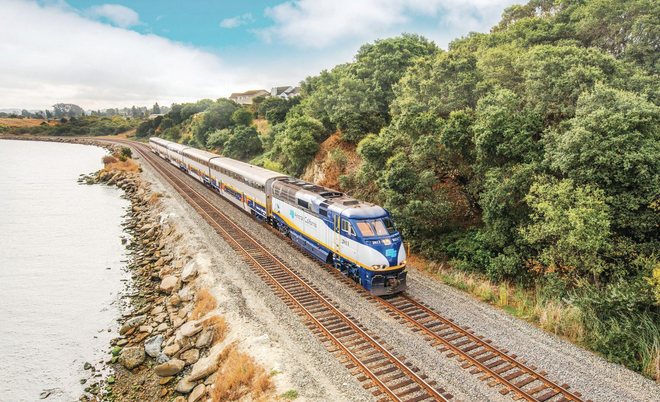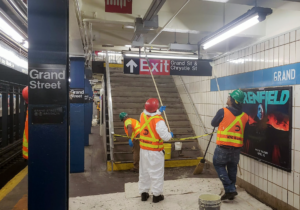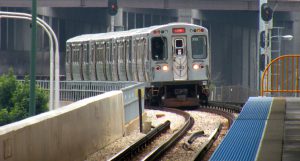Altamont Corridor Express Rail Expansion Faces Two-Year Delay
Written by Kyra Senese, Managing Editor
The Altamont Corridor Express’ expansion into Stanislaus and Sacramento counties is expected to be delayed by two years.
According to the most recent ACE management timeline, the first trains will not run until late 2026, a local news report said. Officials attribute the delay, in part, to a lengthy review procedure by Union Pacific Railroad, which runs freight trains on the same tracks as the passenger trains.
According to a UP spokeswoman, the company is working with ACE to ensure that the expansion offers safe and dependable service.
The delay comes as Modesto is nearing completion of the refurbishment of a 1915 depot for ACE usage. The Ninth Street structure is part of a transit hub that already accommodates bus passengers, the report said.
Since 1998, ACE has run between Stockton and San Jose on weekdays. Four trains depart in the morning, heading west, and return in the late afternoon and evening. The trains make stops in Lathrop/Manteca, Tracy, Livermore, Pleasanton, Fremont, and Santa Clara.
The southern branch is primarily supported by a $400 million state grant issued in 2017. North Lathrop, downtown Manteca, Ripon, Modesto, Ceres, Turlock, Livingston, and Merced will all have stations, the report said. The original plan was to have stations complete at Ceres by 2023 and Merced by 2027.
The new timeline calls for stations in Manteca, Modesto, and Ceres by late 2026. North Lathrop and Ripon would have to wait until 2027. Turlock would come next in 2029, followed by Livingston and Merced in 2030.
In 2018, ACE’s northern branch received the majority of its money from a $500.5 million state grant, the report said. The branch will have stations west of Lodi, northwest Elk Grove, Sacramento City College, Midtown, Old North Sacramento, and Natomas.
The new plan calls for stations in Elk Grove, Midtown, and Natomas by late 2026. Lodi would begin operations in 2027, followed by the college and Old North Sacramento in 2029.
The northern ACE branch also will carry two new round trips on the Amtrak San Joaquins service. This line now has one daily round trip to the capital and another still suspended due to COVID-19, using tracks to the east. Five other Amtrak routes connect Bakersfield to Oakland through Stockton.
The expanded ACE and Amtrak lines could connect in Merced with the first leg of the state’s high-speed rail system. Stations would also be built in Madera, Fresno, Hanford, and Bakersfield. That segment now has a 2030-2033 completion window.
The updated timeline for the overall ACE/Amtrak effort—Valley Rail—was presented at a March 3 meeting of the San Joaquin Regional Rail Commission, which oversees the expansion.
Allowing for passenger service on a freight line necessitates the installation of a second track in many places, according to commission Executive Director Stacey Mortensen. Each specific location requires three rounds of reviews by the host railroad as the drawings become more detailed, Mortensen said.
ACE operates along UP lines, and its northern and southern branches will follow suit, the report said.
“Union Pacific values our longstanding relationship with SJRRC and is committed to working with the agency to ensure the proposed Valley Rail and San Joaquin trains can be introduced safely and operate reliably,” said Robynn Tysver, the railroad’s communications manager.
Amtrak operates on UP tracks from Stockton to Sacramento, but the agency uses the Burlington Northern Santa Fe Railway to reach Oakland and Bakersfield.
The ACE branches will begin with a focus on Bay Area commuters, and Amtrak could eventually provide all-day service. Officials said that with future investments, the trains could reach up to 130 mph.
Simile Construction Services began to remodel the Modesto Transit Center in late 2021 under a $5.23 million contract. The city used both state and federal funds to support the project. The project is expected to be complete within about a month, the report said.
The agency’s bus loading zones now have new lighting, landscaping, security, and other upgrades. Commuters can obtain bus passes and other services within the old depot.
The Southern Pacific Railroad built the depot and provided passenger service until 1971. UP now owns its freight operation, the report said.
ACE intended for Modesto passengers to board on a single platform. Instead, it will receive two to accommodate future ridership growth, however this will necessitate the construction of a pedestrian bridge over the tracks.
The north-south UP line crosses the east-west BNSF route at ground level. A $237 million flyover for UP will be funded by state and federal funds, simplifying both freight and passenger movement, the report said.
The state allocated another $142 million last month to offset inflation on several components of Valley Rail. Part of the funds will be used to fund the Stockton flyover. Some will assist with the establishment of new stations. The remaining funds will be used to extend platforms at five existing ACE stations in order to accommodate longer trains.





